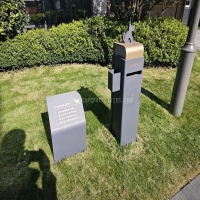Welcome to the website for landscape facilities products and knowledge.
How do landscape tables in historic or heritage sites balance modern functionality with aesthetic preservation?
Historic and heritage sites often face the challenge of integrating modern amenities while preserving their aesthetic and cultural integrity. Landscape tables, as functional elements in these spaces, must strike a delicate balance between usability and historical authenticity.
One approach is using materials and designs that echo the site’s era while incorporating durable, low-maintenance finishes for modern use. For example, reclaimed wood or stone with traditional craftsmanship can maintain visual harmony, while subtle updates like weather-resistant coatings ensure longevity.
Another strategy is adaptive reuse, where existing historic elements are repurposed as tables. This not only reduces waste but also retains the site’s narrative. For instance, salvaged architectural fragments can be transformed into unique seating areas, blending history with practicality.
Collaboration with conservation experts is crucial. Their insights ensure that any additions or modifications align with preservation guidelines. Modern interventions, such as discreet lighting or accessible seating, can be seamlessly integrated without disrupting the site’s character.
Ultimately, the goal is to create landscape tables that serve visitors today while honoring the past. By prioritizing thoughtful design and material choices, heritage sites can achieve a harmonious balance between function and preservation.
Related search:

Recommendation
Outdoor cat and dog feces trash can; Community pet trash can; Metal multi-color design